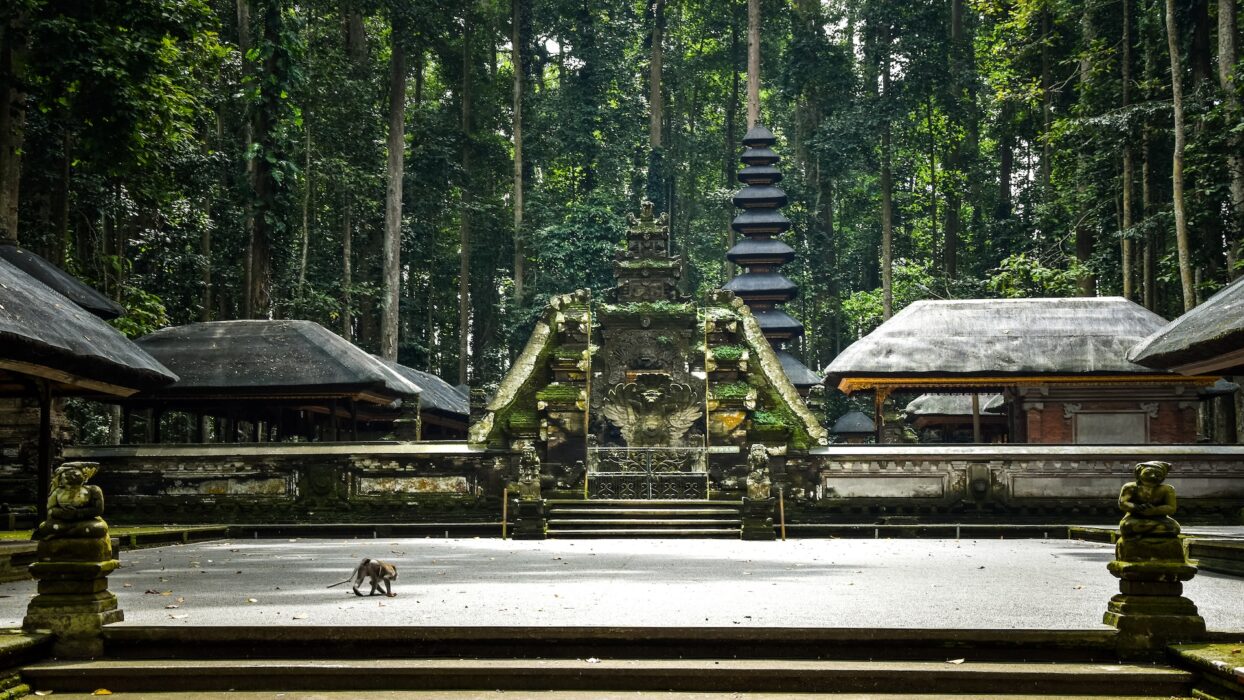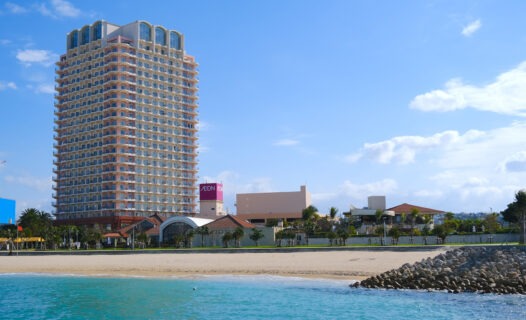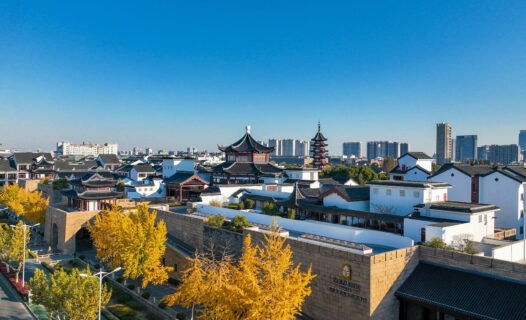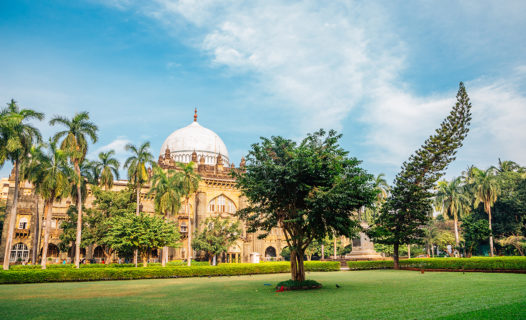Introduction
Welcome to the enchanting world of Ulun Danu Temple, a stunning water temple nestled on the shores of Lake Bratan in Bali. This iconic site is not just a feast for the eyes; it holds a deep significance in Balinese culture and spirituality. As you wander through its serene surroundings, you’ll discover a vibrant tapestry of traditions and rituals that make this temple a must-visit for travelers seeking an authentic Balinese experience. Whether you’re a culture enthusiast, a photography lover, or simply in search of tranquility, the Bali water temple promises an unforgettable journey into the heart of Bali’s rich heritage.
Discovering Ulun Danu Temple: A Gem of Bali
Perched majestically at the edge of Lake Bratan, the Ulun Danu Temple is a sight to behold. Its location is nothing short of breathtaking, surrounded by lush green hills and the cool mountain air of Bedugul. The temple complex consists of several shrines dedicated to the goddess of water, Dewi Danu, who is revered for her role in agriculture and irrigation. This is a place where spirituality and nature intertwine, creating a serene atmosphere that invites reflection and peace.
The architectural beauty of Ulun Danu Temple is a highlight for many visitors. The intricate designs and tiered roofs of the shrines are prime examples of traditional Balinese architecture. Each structure is adorned with elaborate carvings and vibrant offerings, showcasing the artistry and devotion of the Balinese people. As you stroll through the temple grounds, take a moment to appreciate the craftsmanship that has been passed down through generations.
But what truly sets Ulun Danu Temple apart is its spiritual significance. It serves as a place of worship for the local community, where rituals and ceremonies are held to honor the goddess and seek her blessings. This connection to the divine is palpable as you witness the locals engaging in their daily prayers and offerings. It’s a reminder of the deep-rooted beliefs that shape Balinese culture and the importance of water in sustaining life on the island.
For those looking to capture the essence of Bali, Ulun Danu Temple offers some of the most picturesque spots for photography. The reflection of the temple on the tranquil lake, framed by misty mountains, creates a postcard-perfect moment that you won’t want to miss. With the right timing, you can experience a breathtaking sunrise or sunset that will leave you in awe of nature’s beauty.
Whether you’re here for the stunning views, the rich culture, or the spiritual experiences, Ulun Danu Temple is a treasure trove waiting to be explored. So grab your camera and prepare to be enchanted by this remarkable destination!
Festivals at Ulun Danu Temple: A Celebration of Culture
As you delve deeper into the heart of Ulun Danu Temple, you’ll find that the experience is enriched by the vibrant festivals celebrated throughout the year. Major events like Melasti and Piodalan are not just gatherings; they are colorful celebrations that highlight the essence of Balinese festivals. These occasions bring together locals and visitors alike, showcasing the island’s rich cultural heritage.
Significance of Each Festival
The Melasti ceremony is a purification ritual held before the Balinese New Year, known as Nyepi. During this festival, offerings are made to the gods, and the community gathers at the lake to cleanse themselves spiritually. Witnessing this event is a profound experience, as the local people dress in traditional attire, carrying beautifully crafted offerings to the water. The atmosphere is filled with prayers, music, and a sense of unity that is truly heartwarming.
Another significant event is the Piodalan festival, which celebrates the temple’s anniversary. This vibrant ceremony features traditional dances, gamelan music, and colorful processions that bring the temple to life. It’s a time for the community to come together in gratitude and to honor their spiritual beliefs. Engaging with the locals during these festivals provides a unique opportunity to learn about their customs and traditions, making your visit even more meaningful.
Travelers often share how these festivals transformed their experience at Ulun Danu Temple, allowing them to connect with the local culture on a deeper level. If you’re lucky enough to visit during one of these celebrations, you’ll find yourself swept up in the joyous spirit of Bali!
Best Times to Experience Ulun Danu Temple
Timing is everything when it comes to experiencing the magic of Ulun Danu Temple. The best times to visit are during the dry season, from April to October, when the weather is pleasant and ideal for exploring. However, if you’re keen on immersing yourself in the local culture, planning your visit around the temple’s festivals will provide a unique glimpse into Balinese life.
Each season brings its own charm. The rainy season, while wetter, transforms the landscape into a lush green paradise, giving the temple a mystical quality as mist rolls over the lake. If you don’t mind a bit of rain, this can be a serene time to visit, with fewer crowds and a more intimate experience.
Visiting during the early morning or late afternoon is highly recommended, as the light creates stunning reflections on the lake, perfect for photography. The tranquility of these hours allows for a more peaceful exploration of the temple grounds, making it easier to soak in the beauty and spirituality of the site.
So, whether you’re chasing the vibrant festivities or the serene morning light, Ulun Danu Temple is ready to welcome you with open arms!
Practical Information for Travelers: Your Essential Guide
Before you set off on your adventure to Ulun Danu Temple, it’s a great idea to get familiar with some practical details that will make your visit smooth and enjoyable. Knowing the opening hours, entrance fees, and transportation options can help you plan your day effectively.
Opening Hours and Entrance Fees
Ulun Danu Temple is open daily from 8:00 AM to 6:00 PM. This gives you plenty of time to explore the grounds and soak in the stunning views. As for the entrance fee, it’s quite affordable at around IDR 50,000 (approximately $3.50 USD) per person. This small fee goes a long way in helping maintain the temple and its beautiful surroundings.
Transportation Options
Getting to the temple is a breeze! If you’re staying in Bali, you can hire a private driver, which is a popular choice among tourists. This way, you can enjoy the scenic drive through the lush countryside without the hassle of navigating local transport. Public buses are also available, but they might take longer and require a bit of walking to reach the temple.
For those feeling adventurous, renting a scooter is another fantastic option. Just make sure to wear a helmet and drive safely! The roads around Bedugul are stunning, and you’ll want to stop and take pictures along the way.
Tips for First-Time Visitors
As a first-time visitor, here are some handy tips to make your experience even better:
- Dress Code: Modest clothing is appreciated at the temple. Sarongs are often available for rent at the entrance if you need one.
- Photography Etiquette: While snapping photos is encouraged, be respectful during ceremonies and avoid using flash when people are praying.
- Stay Hydrated: Bring water with you, especially if you plan to explore the surrounding areas. The mountain air can be refreshing but also dehydrating.
- Local Customs: Take a moment to observe local customs and traditions. If you see offerings, remember to treat them with respect.
Engaging Activities at Ulun Danu Temple: More Than Just Sightseeing
Ulun Danu Temple is not just a place to admire; it’s a hub of activities that cater to all types of travelers. Whether you’re an adventure seeker or a culture buff, there’s something here for you!
Boat Rentals and Lake Activities
One of the most enjoyable activities is renting a boat to explore Lake Bratan. Glide across the calm waters and take in the breathtaking views of the temple from different angles. You can even hire a local guide who can share stories about the temple and its significance while you enjoy the ride.
Best Photography Locations
For photography enthusiasts, Ulun Danu Temple offers countless stunning backdrops. Here are some of the best spots to snap that perfect shot:
- The Temple Reflection: The iconic view of the temple reflecting on the lake is a must-capture, especially during sunrise or sunset.
- Surrounding Gardens: The beautifully manicured gardens around the temple provide vibrant colors and lush greenery, perfect for a serene photo.
- Local Offerings: Capture the intricate details of traditional Balinese offerings placed around the temple; they tell a story of devotion and culture.
Don’t forget to experiment with angles and perspectives! The changing light throughout the day can create magical effects, so stick around to see how the scenery transforms.
Culinary Delights Near Ulun Danu Temple: A Taste of Bali
After a day of exploring, you’ll likely work up an appetite. Fortunately, the Bedugul area is home to some delightful dining options that showcase the best of Bali’s culinary scene.
Dining Options
From local warungs (small family-owned eateries) to more upscale restaurants, there’s something for everyone. Here are a few recommendations:
- Warung Rekreasi Bedugul: Known for its delicious traditional dishes, this place offers a cozy atmosphere and stunning lake views.
- Ristorante La Terra: For a taste of Italian cuisine amidst the Balinese landscape, this restaurant serves up delicious pasta and pizza.
- Local Food Stalls: Don’t miss trying nasi campur (mixed rice) and satay from local vendors. They are not only affordable but also packed with flavor!
Must-Try Dishes
When in Bali, be sure to sample some traditional dishes that will tantalize your taste buds:
- Bebek Betutu: A slow-cooked duck dish infused with aromatic spices.
- Gado-Gado: A refreshing salad with a peanut sauce dressing, perfect for a light meal.
- Rendang: A spicy meat dish that’s rich in flavor and a staple in Indonesian cuisine.
Exploring Nearby Attractions: Beyond the Temple
While Ulun Danu Temple is a highlight, the surrounding Bedugul region is bursting with attractions just waiting to be explored. Make the most of your trip by checking out these nearby gems!
Nearby Attractions
- Bali Botanic Garden: A sprawling garden with exotic plants, walking paths, and a peaceful atmosphere perfect for a leisurely stroll.
- Handara Gate: This iconic gate is a popular photo spot and is surrounded by beautiful landscapes.
- Jatiluwih Rice Terraces: A UNESCO World Heritage site, these stunning rice terraces offer breathtaking views and a glimpse into traditional Balinese agriculture.
Each of these spots adds to the rich tapestry of experiences available in Bali, making it easy to fill your itinerary with unforgettable memories.
Sustainable Tourism at Ulun Danu Temple: Respecting Nature and Culture
As you explore the beauty of Ulun Danu Temple and its surroundings, it’s important to consider the impact of tourism on the local environment and culture. Embracing sustainable practices helps preserve this enchanting destination for future generations.
Respecting Nature
When visiting, be mindful of your surroundings. Avoid littering and always dispose of waste properly. Stick to marked paths to protect the local flora and fauna. By being a responsible traveler, you contribute to the conservation of Bali’s natural beauty.
Honoring Local Culture
Engage with the local community respectfully. Participate in cultural activities, and if you have the opportunity, learn from local artisans and craftsmen. Supporting local businesses helps sustain the community and keeps traditional practices alive.
Seasonal Travel Insights: What to Expect Year-Round
Weather in Bali can vary, and understanding seasonal patterns can enhance your experience at Ulun Danu Temple. Here’s what to expect throughout the year:
Weather Patterns
The dry season, from April to October, offers sunny days perfect for exploring. The rainy season, from November to March, brings lush greenery and fewer crowds, allowing for a more intimate experience. Each season has its charm, so choose based on your preferences!
Peak Tourist Seasons
Keep in mind that July and August are peak tourist months. If you prefer a quieter experience, consider visiting during the shoulder seasons (April to June and September to October) when the weather is still pleasant, but the crowds are thinner.
Safety and Health Guidelines: Visiting Ulun Danu Temple Responsibly
Your safety and health should always come first while traveling. Here are some guidelines to keep in mind during your visit:
Health Precautions
As with any travel destination, staying healthy is key. Make sure to drink plenty of bottled water, especially if you’re not used to the local climate. Avoid consuming tap water and be cautious with street food if you have a sensitive stomach.
Local Customs
Respect local customs and traditions. If you’re unsure about something, don’t hesitate to ask a local for guidance. They will appreciate your interest in their culture!
Fun Facts About Ulun Danu Temple: Did You Know?
Before you wrap up your visit, here are some fun facts that will make your experience even more special:
- Historical Significance: Ulun Danu Temple dates back to the 17th century and is one of Bali’s most important temples.
- Unique Architecture: The temple features a blend of Hindu and Buddhist architectural styles, making it a unique representation of Bali’s diverse culture.
- Symbol of Agriculture: The temple is dedicated to Dewi Danu, the goddess of water, who is crucial for irrigation and agriculture in Bali.
Commonly Asked Questions (FAQs) About Ulun Danu Temple
Got questions? Here are some answers to common queries about visiting Ulun Danu Temple:
What is the best time to visit Ulun Danu Temple?
The best time is during the dry season (April to October). Early mornings and late afternoons provide stunning light for photography and a tranquil atmosphere.
Are there any dress codes for visiting the temple?
Yes, modest clothing is encouraged. Sarongs are available for rent at the entrance if you need one.
Can I take photos at the temple?
Absolutely! Just be respectful during ceremonies and avoid using flash when people are praying.
With all this information, you’re now ready to explore the wonders of Ulun Danu Temple and the beautiful surroundings of Bali. From its serene landscapes to its rich cultural experiences, this destination promises memories that will last a lifetime.




















